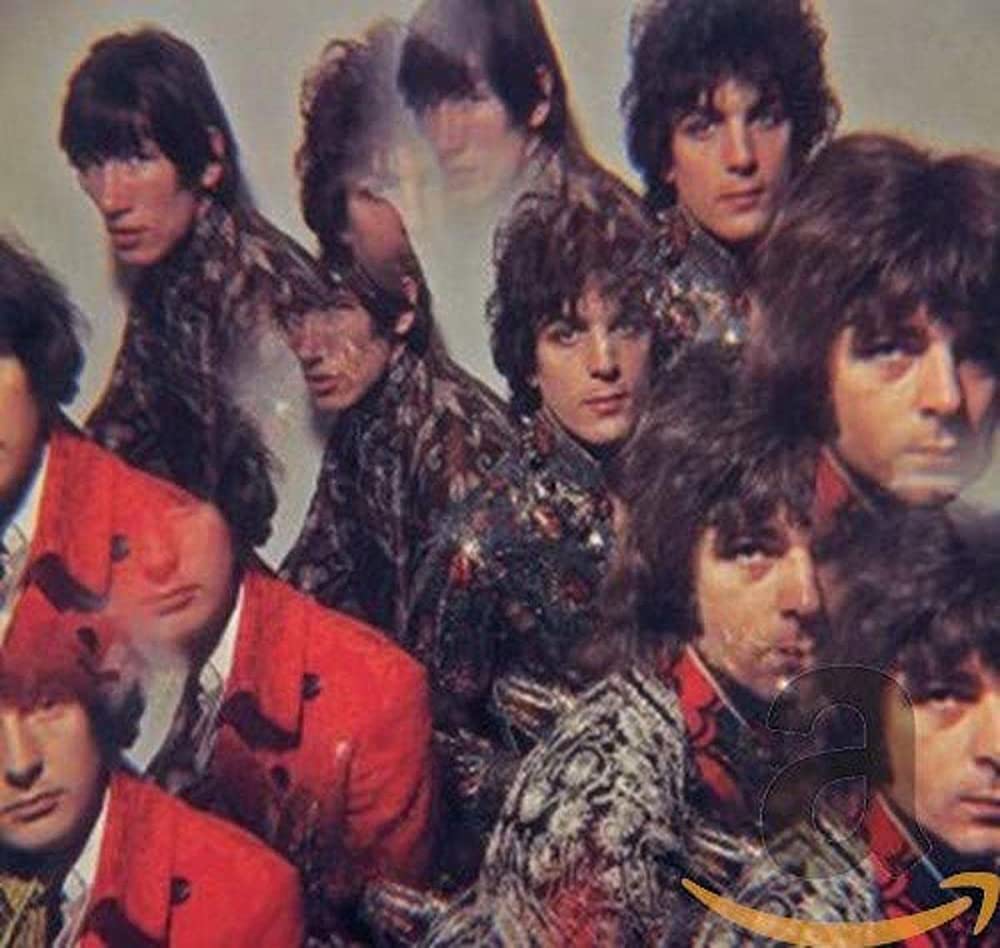
The genesis of Pink Floyd can be traced back to Roger Waters, Richard Wright and Nick Mason, students of architecture at London University. In 1964, they formed the group Sigma 6, which was renamed several times, but it was the arrival of Syd Barrett in 1965 that marked the real turning point.

Barrett's creative genius, combined with the constant innovation of the other three members, formed a unique alchemy. At the crossroads of progressive rock, psychedelic pop and space rock, their avant-garde music quickly made a name for itself on the British music scene.
Their first single, “Arnold Layne”, released in March 1967, already demonstrated their penchant for absurd lyrics and daring arrangements. The album that followed, ‘The Piper at the Gates of Dawn', was a veritable manifesto of British psychedelia, with each track seeming to be a sonic experiment in itself. From the ingenious ‘Interstellar Overdrive' to the delirious ‘Bike', the album is a demonstration of their creative genius.
However, Barrett's brilliance was beginning to dim. The singer was increasingly unsettled by fame and the excessive use of psychedelic drugs, which was to have a profound effect on the band. It was at this point that David Gilmour, an old school friend, was recruited as guitarist and singer, to compensate for Barrett's instability.
Gilmour's arrival marked the start of a new era for Pink Floyd. With the gradual withdrawal of Barrett, who finally left the band in 1968, Pink Floyd's sound evolved. It became more complex and layered, giving rise to conceptual albums that are now legendary, such as “The Dark Side of the Moon”, “Wish You Were Here” and “The Wall”.
Where does the name Pink Floyd come from?
The name Pink Floyd was chosen by Syd Barrett. It was a tribute to two blues musicians he admired, Pink Anderson and Floyd Council. Barrett combined their first names to form “Pink Floyd”.
Syd Barrett was known for his interest in American blues, a genre that strongly influenced British rock at the time. However, despite the bluesy origins of the name, Pink Floyd's sound quickly moved towards psychedelic rock and progressive rock.
The Piper at the Gates of Dawn album
Influenced by the London psychedelic scene of the time, The Piper at the Gates of Dawn is a celebration of experimentation. Led by the creative genius of Syd Barrett, the album offers a journey through a lush sonic universe, where rock conventions are discarded in favour of bold, original sound constructions.
The album stands out for its bold exploration of sonic texture. Whether it's the wrenching riffs and distortions of ‘Interstellar Overdrive' or the more pop and quirky arrangements of ‘The Gnome', each track is a unique exploration of sonic possibilities.
“The Piper at the Gates of Dawn” is unquestionably the work of Syd Barrett. The singer and guitarist's creative genius shines through in the absurdly imaginative lyrics that make up the album. His lyrics conjure up a wonderful world of gnomes, bicycles and laughing cats, a testament to his wild and slightly delirious imagination.
But it's also Barrett's guitar, his ability to generate innovative and strange sonic textures, that imbues the album with a psychedelic aura. His playing technique, combining slide, feedback and inventive use of effects pedals, is an essential part of the album's signature sound.
“The Piper at the Gates of Dawn” remains one of Pink Floyd's greatest hits and one of the most influential albums of psychedelic rock. With this album, Pink Floyd not only defined their own sound, but also laid the foundations for progressive rock, a genre that would continue to evolve throughout the 70s.
This album, which is both an emanation of the psychedelic spirit of the 60s and the starting point for a band that would become one of rock's greatest legends, deserves to be listened to again and again. Through it, we can hear the first pulsations of what was to become the pulsating heart of progressive rock: a spirit of boundless innovation and exploration.
The song: Lucifer Sam
“Lucifer Sam” is notable for its enigmatic yet charming lyrics by Syd Barrett. The title of the song, which gives the name to a “Siamese cat”, is intriguing in itself. Barrett, in his own unique way, paints a surreal portrait of this mysterious cat, with lyrics like “That cat's something I can't explain”.
Syd Barrett often drew on his personal life to write his songs. Some theories suggest that ‘Lucifer Sam' was the name of his own cat, while others suggest that ‘Sam' was a reference to his then-girlfriend Jenny Spires. Either way, the ambiguity of the song adds a layer of mystery that is typically Barrettian.
Musically, ‘Lucifer Sam' is marked by a hypnotic guitar riff that zigzags through the song, creating a dark and quirky atmosphere. The accompaniment of Nick Mason's percussion, Richard Wright's keyboard and Roger Waters' bass reinforces this impression. The addition of sound effects, such as feedback and reverb, accentuates the psychedelic feel of the song.
In addition, the guitar riff, which bears an uncanny resemblance to a James Bond theme, gives “Lucifer Sam” a cinematic feel. Did Syd Barrett, a great fan of science fiction and spy films, want to pay tribute to the world of 007? This hypothesis cannot be ruled out, reinforcing the image of a song with multiple facets.
Among the covers of this song, I can't resist sharing with you the version by Belgian alternative rock band La Muerte.
Where to listen The Piper at the Gates of Dawn ?
- Écouter The Piper at the Gates of Dawn sur Spotify
- Écouter The Piper at the Gates of Dawn sur Deezer
- Écouter The Piper at the Gates of Dawn sur Youtube
